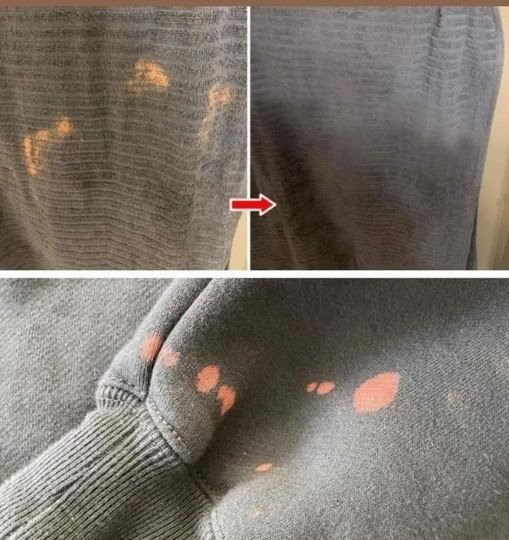ADVERTISEMENT
How to Use Hydrogen Peroxide:
- Test First: Before applying hydrogen peroxide to the bleach stain, it’s essential to test it on a small, inconspicuous part of the fabric or material to make sure it doesn’t cause further damage.
- Dilute the Hydrogen Peroxide: If you’re concerned about the strength of the hydrogen peroxide, dilute it with a little water. This is particularly important for delicate fabrics.
- Apply Hydrogen Peroxide: Using a clean cloth or cotton ball, gently apply hydrogen peroxide to the bleach stain. Allow it to sit for a few minutes.
- Blot and Rinse: After a few minutes, blot the area with a damp cloth to remove the peroxide. You may need to repeat this step for stubborn stains.
- Wash the Fabric: Once the stain has been lightened, wash the fabric as usual. The hydrogen peroxide should blend the bleach stain with the surrounding fabric, making it less noticeable.
Why This Works:
Hydrogen peroxide works as a mild bleach alternative, which can lighten the fabric around the bleach stain. It doesn’t completely reverse the bleaching effect but can significantly reduce the stark contrast of the stain against the rest of the material.
2. Use Fabric Dye to Conceal Bleach Stains
For a more permanent solution, fabric dye is an excellent way to disguise bleach stains, especially on clothing and upholstery. If you can’t restore the original color of the fabric, fabric dye can be used to add a new color to the affected area. This is an ideal solution if the bleach stain has left a significant mark and you want to cover it up while restoring the appearance of the fabric.
What You’ll Need:
- Fabric dye (choose a color that matches or complements the item)
- A plastic bag or plastic wrap
- Gloves
- Water
How to Use Fabric Dye:
- Choose the Right Fabric Dye: Select a fabric dye that is suitable for the material you’re working with. If you’re dyeing a piece of clothing, you can usually find dyes at craft stores or online. Ensure that the dye color is close to the original color of the fabric or a color you would prefer to apply.
- Prepare the Fabric: Wet the fabric with water. This will help the dye absorb evenly. Make sure to wear gloves to avoid staining your hands.
- Apply the Dye: Apply the dye to the bleach stain, using a sponge or brush for precise application. For larger stains, you can soak the entire piece of fabric in a dye bath, following the instructions on the dye package.
- Allow the Dye to Set: Let the dye sit on the fabric for the recommended time, usually around 30 minutes, depending on the product.
- Rinse and Wash: Once the dye has set, rinse the fabric in cold water, and then wash it according to the dye instructions. Be sure to allow it to dry completely.
Why This Works:
Fabric dye can cover bleach stains by providing a new layer of color to the affected area. This method is ideal for covering stains on clothes, towels, or even upholstery. It’s a great option if the bleach stain has affected a larger area or if you’re looking to completely change the color of an item.
Bonus Tip: Prevention is Key!
While these techniques can help remove bleach stains, it’s important to be cautious when working with bleach in the future to avoid more stains. Consider wearing gloves, using a bleach-safe spray bottle to control the application, and covering your clothes with old aprons or garments. Taking simple precautions can save you time and effort in cleaning and repairing.
Conclusion:
Bleach stains don’t have to mean the end of your favorite clothing or furniture. With the right techniques, such as using hydrogen peroxide or fabric dye, you can either reduce the appearance of the stain or completely conceal it. These simple at-home remedies can save your fabrics and restore them to their former glory.
Whether you’re dealing with a small bleach stain or a large discoloration, try these methods to tackle the problem with ease. Give them a go the next time you encounter bleach stains, and you might be surprised at how effective they can be!
ADVERTISEMENT
ADVERTISEMENT
